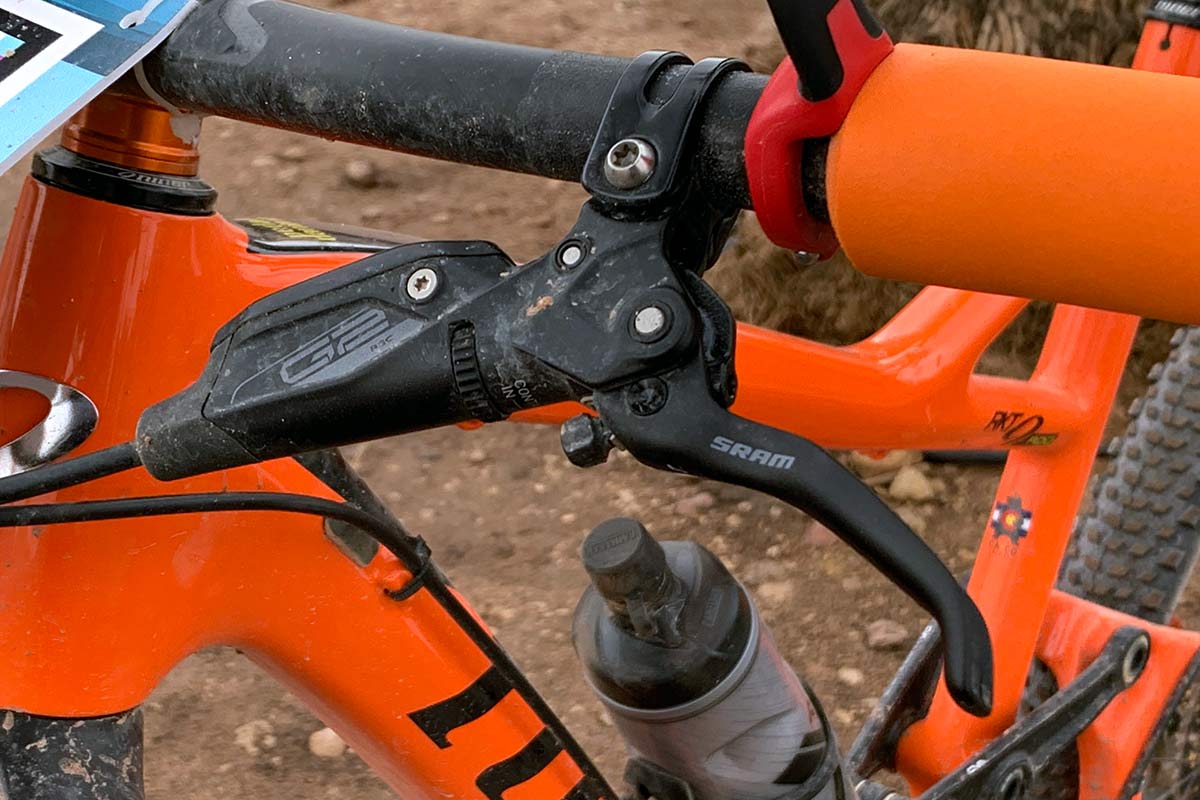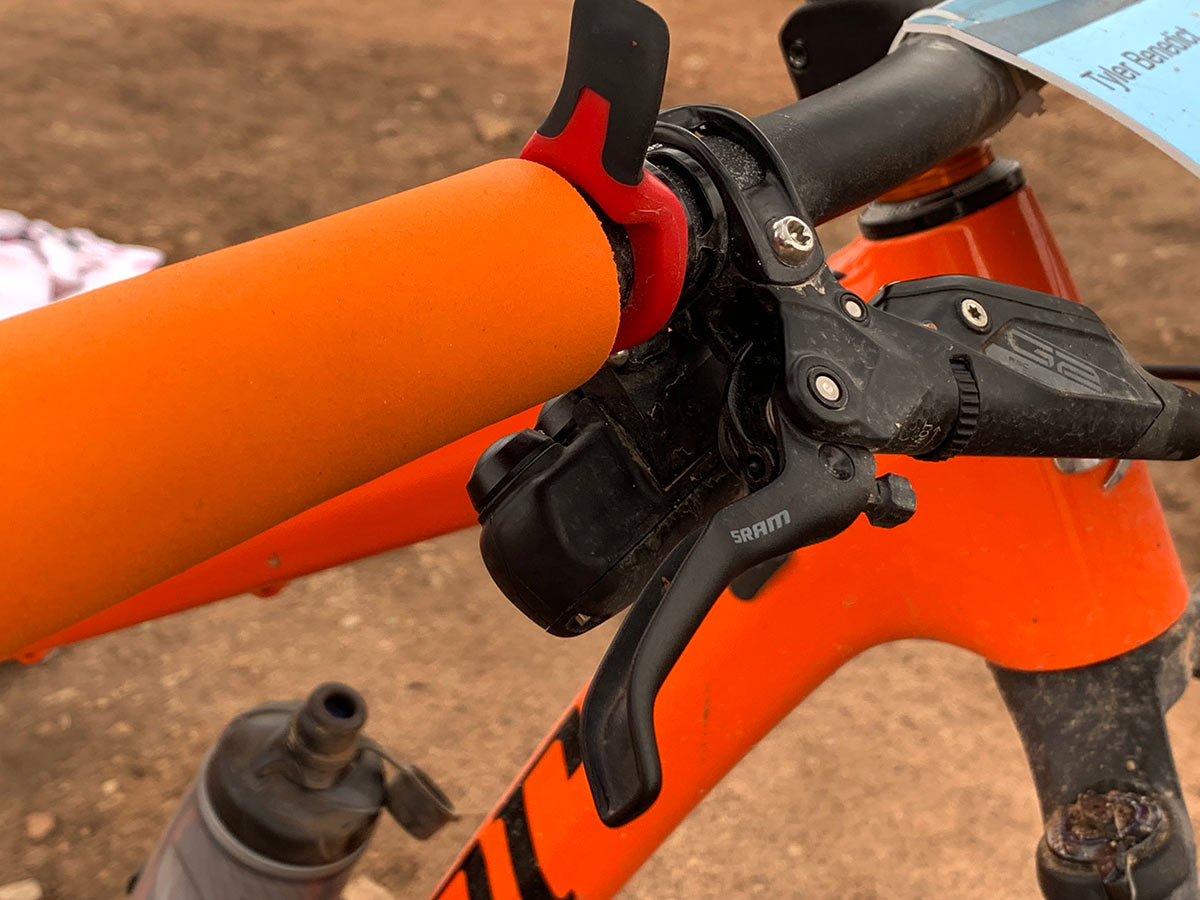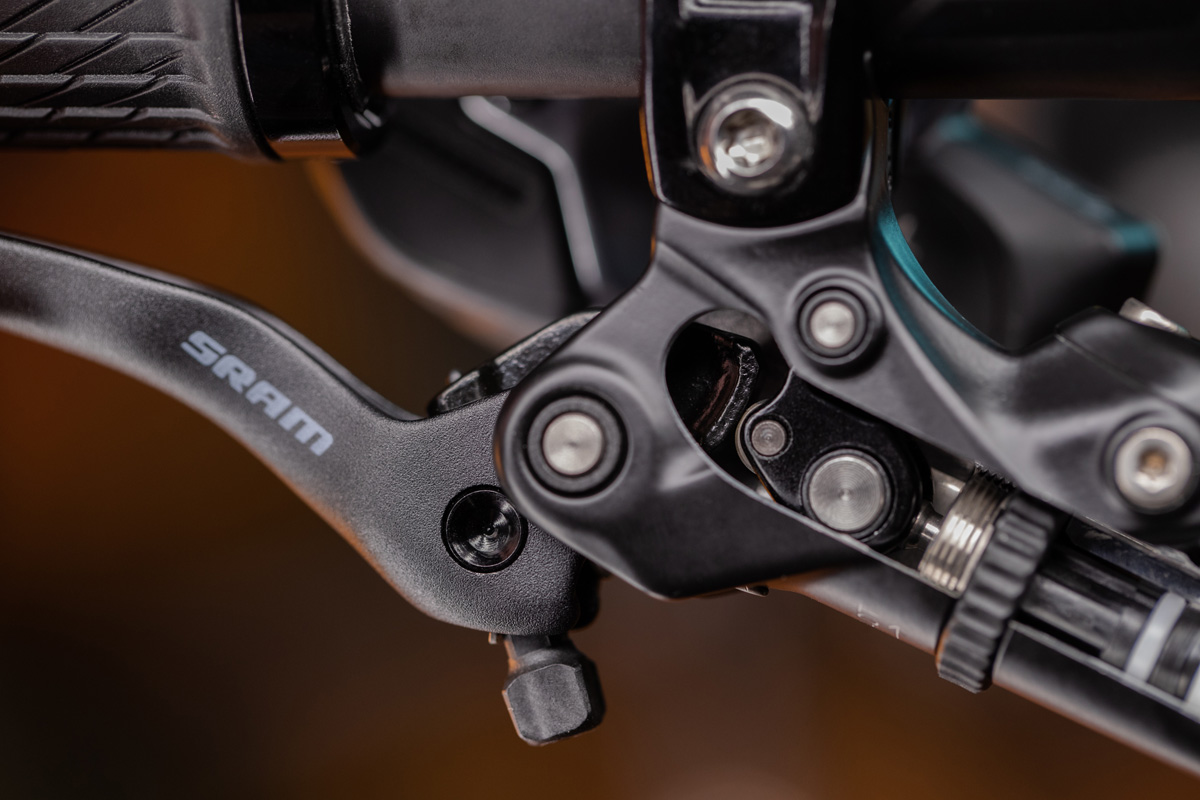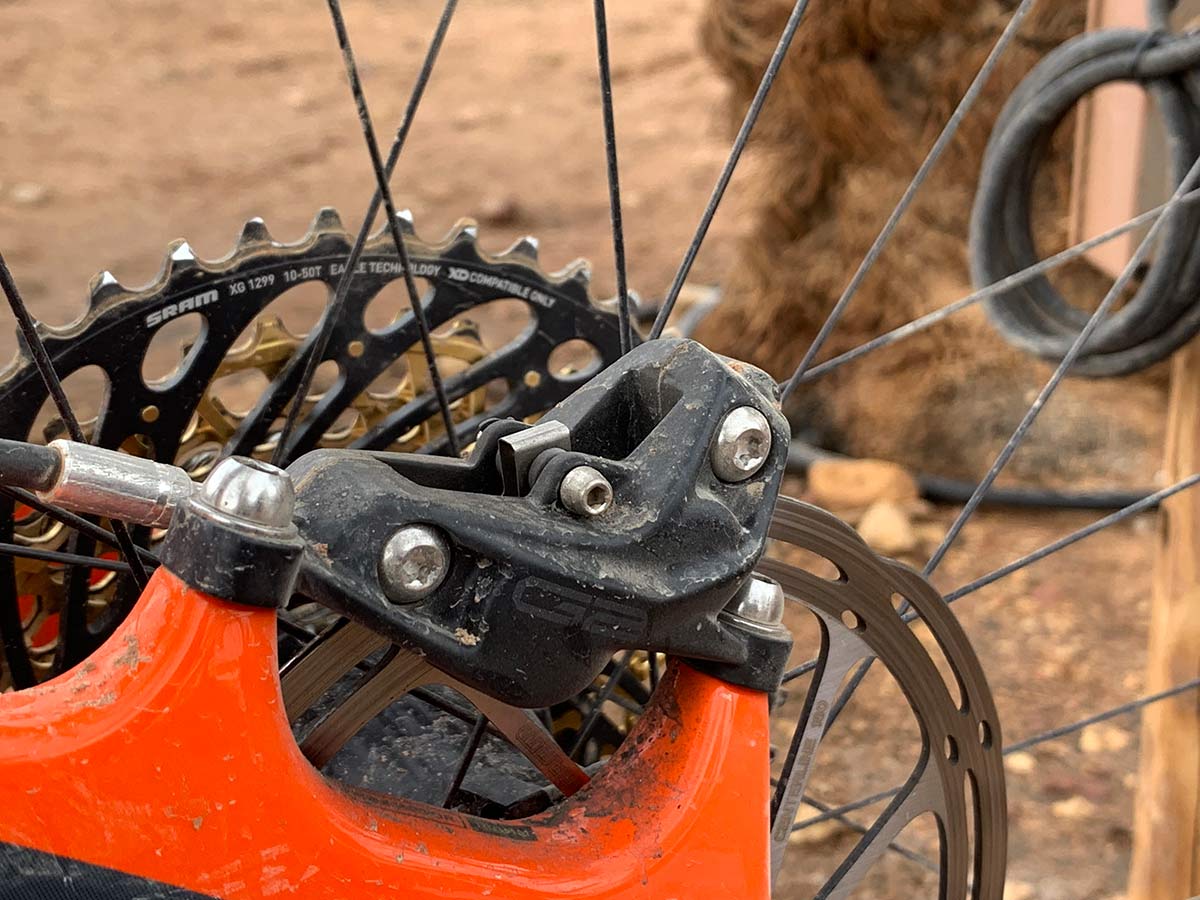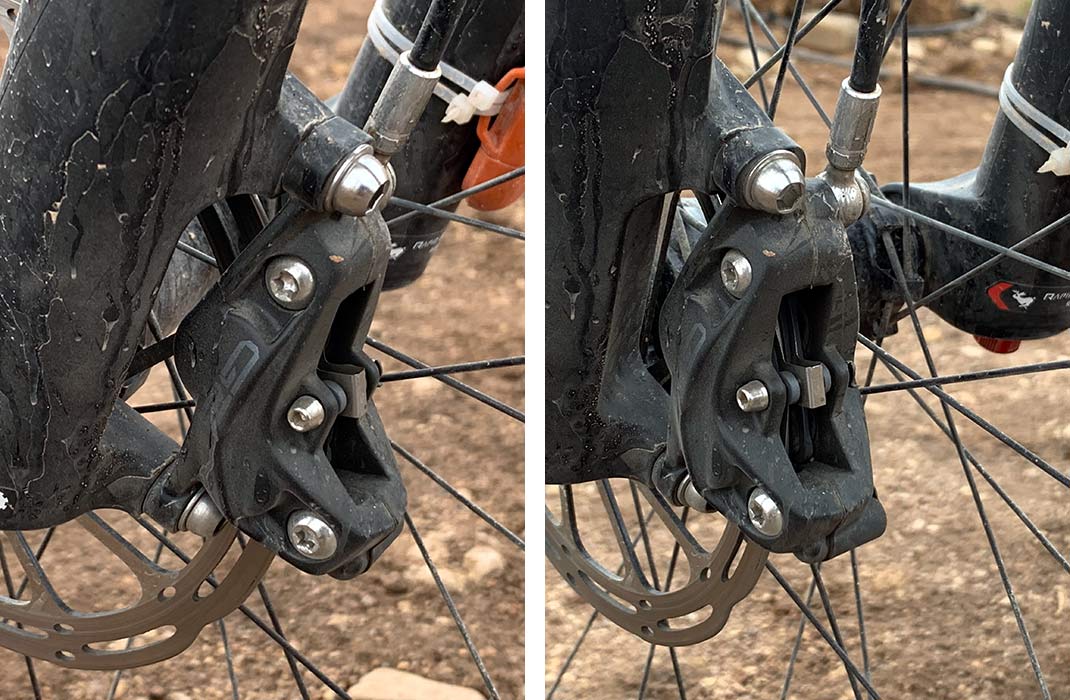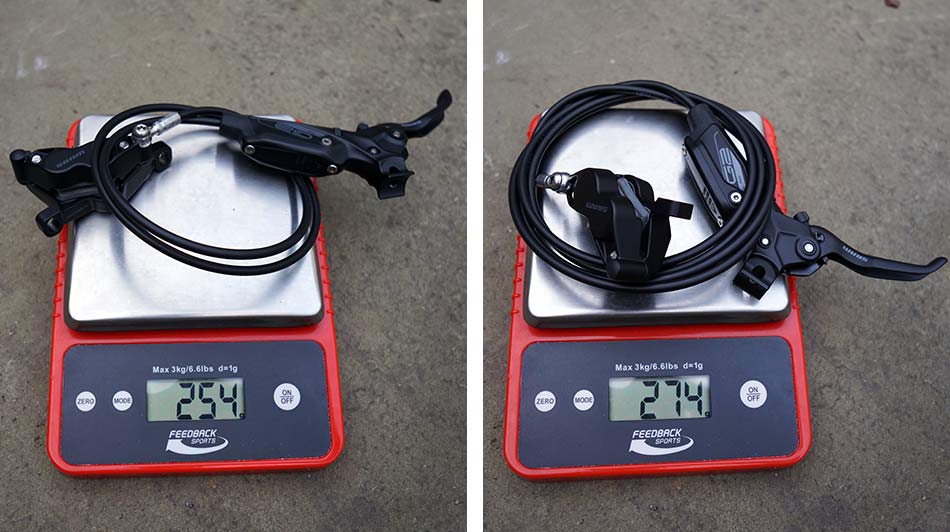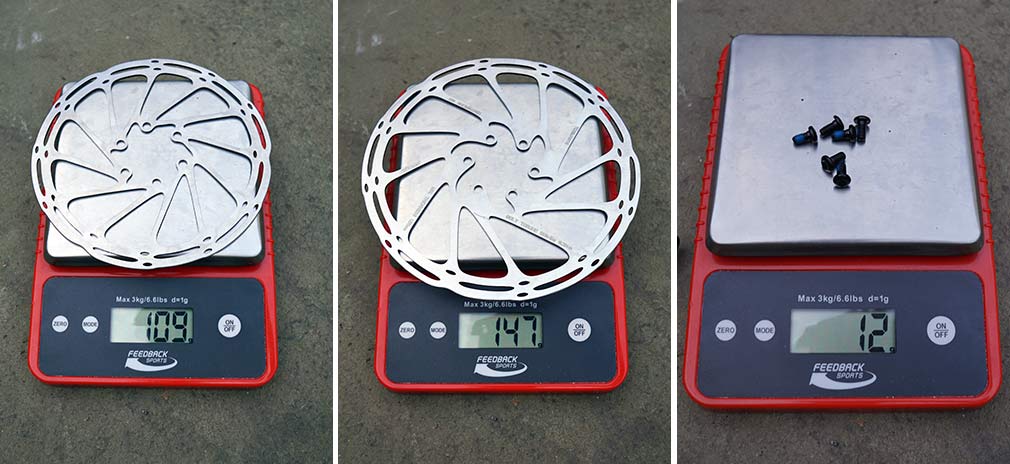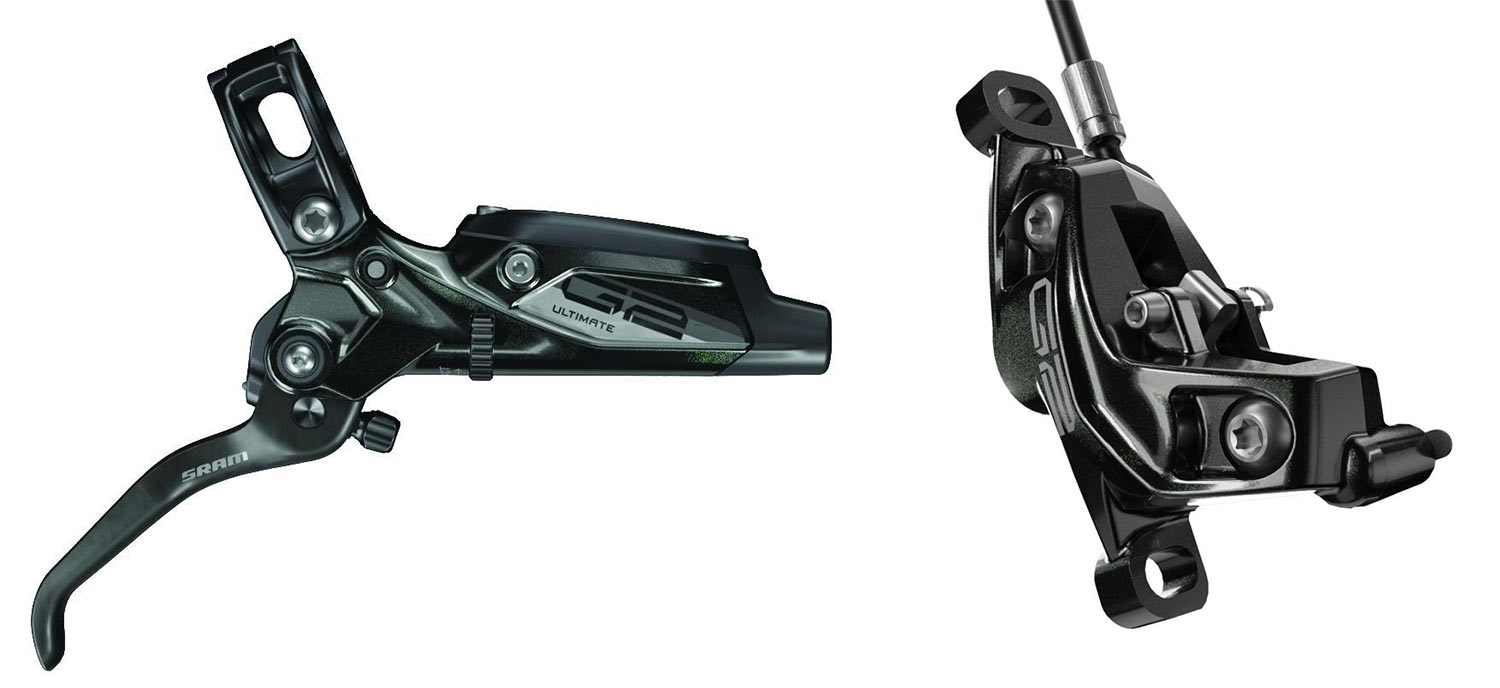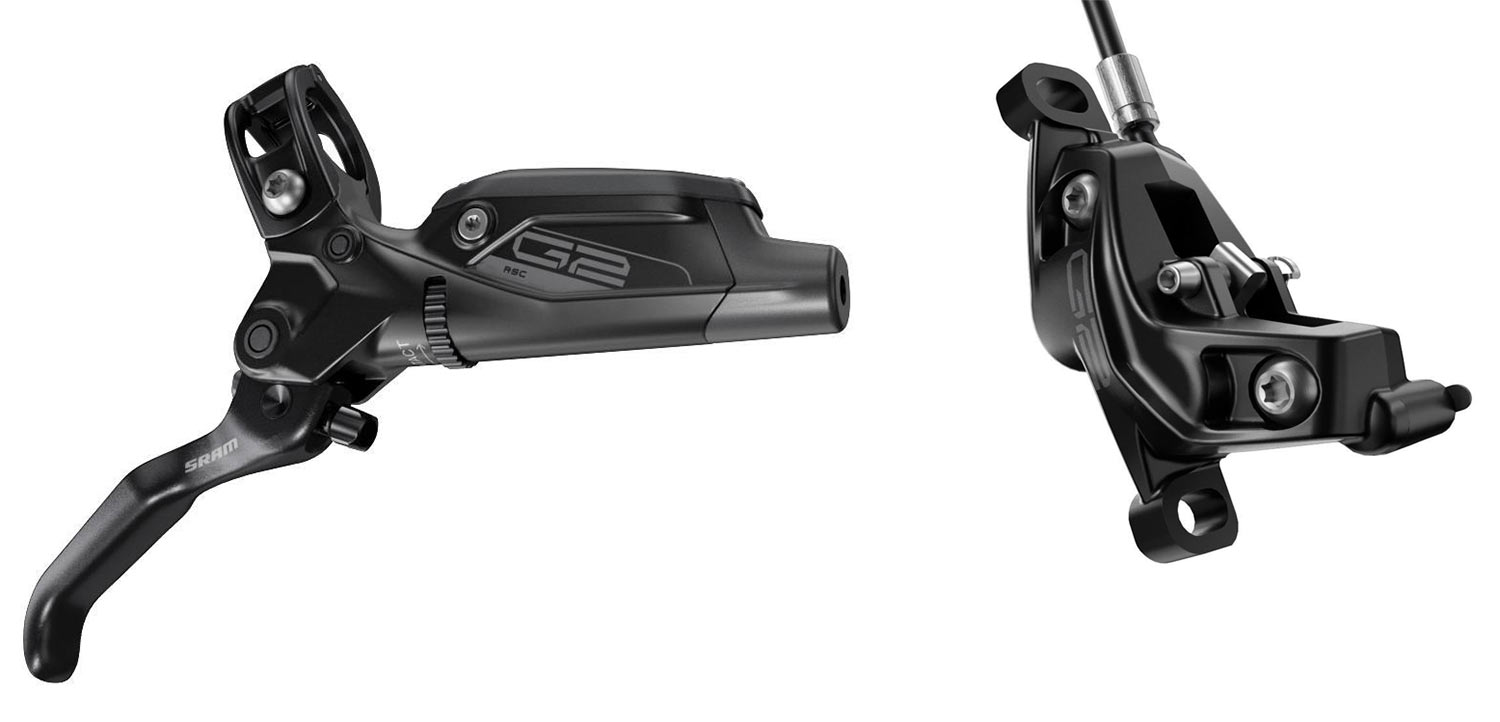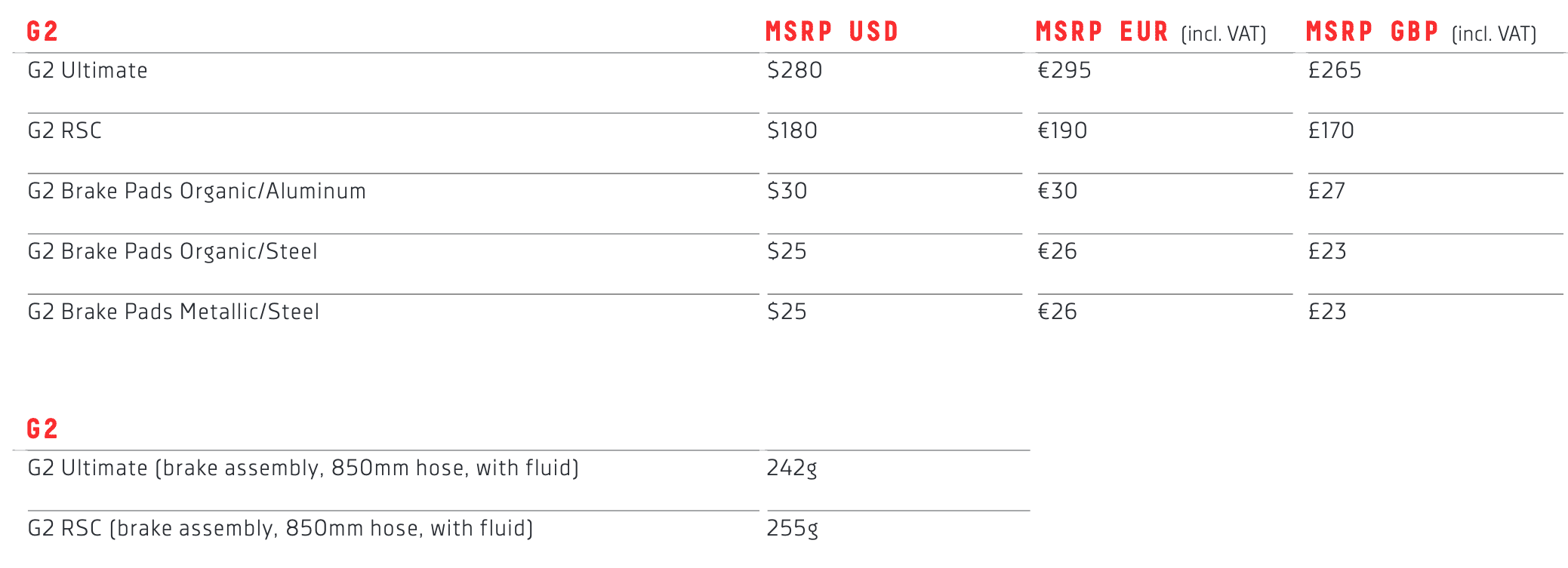The SRAM Guide brakes are getting an upgrade. Or, more precisely, a replacement. The new SRAM G2 brakes bring along all of the best features that made the original Guides a popular choice, then add stronger calipers with tighter tolerances. They’ve also added a new “Power” organic brake pad compound, making these brakes light enough for trail use, but strong enough for competitive enduro riders.
Two models are offered, the G2 RSC and the G2 Ultimate, the differences of each we’ll explain as we go along…
Starting at the lever, the new G2 uses the same SwingLink leverage ratio, which is also the same as what’s on the Code brakes. So, if you’re moving between bikes, the brake’s lever feel will be the same.
Inside, some of the small parts have changed, and the assembly process has been refined. If you’re one of the unlucky folks that had a set of older Guides get stuck once you pulled the lever in, that issue was related to the master cylinder’s piston’s plastic material eventually swelling after a year or two of being in contact with the DOT 5.1 fluid. SRAM made a rolling change to that material to fix the problem a little more than a year ago, so it shouldn’t be an issue here (or in more recently manufactured Guide brakes).
The G2 RSC uses a bushing at the main lever pivot, and a new pivot dowel (aka “axle”). The G2 Ultimate uses a bearing, and upgrades to a carbon fiber lever blade.
G2 calipers are the real change
The big change is the calipers, which get more refined internals for tighter tolerances around the pistons and their seals. As with any hydraulic brake, the pistons rely on the seals not just to keep the fluid in and air out, but also to retract the pads after you release the lever. Here, they do the same, but SRAM says the improved design means you’ll have the same exact pad retraction and gap throughout the entire life of your brake pads. It also means the gap between the pads is more consistent from brake to brake, so installation should be easier because there’s always going to be the correct amount of gap between the pads.
The caliper body is beefed up a bit, with a slightly smaller pad opening. They also made the feet larger, so there’s more material all over, but especially where the calipers mount to your bike. The goal? To make the calipers stiffer, which means they’ll deliver more power under hard braking efforts. How much more? They say about 7%, but are also saying they’re basically mini Codes.
The pad shapes are the same as the Guides, and you’ll have your choice of metallic pads for the most power and wet, crappy conditions, or two different organic pads. The original Organic is now their “Quiet” pad, which is what comes stock and is a good general conditions pad. The new Power Organic pad adds more power and bite, particularly during extended braking sessions. All of the pads use a steel backplate, however they will offer an alloy-backed Metallic pad aftermarket that’s about 10g lighter. There’s no more stainless steel Heatshield on any of them because they’ve moved to a phenolic piston material, which doesn’t transmit very much heat from the pad to the fluid.
Other little changes & notes
It’s still a four-piston caliper, and piston sizes are still 14mm and 15mm (Same as the Guides. Code is 15mm/16mm, just for comparison). Both versions now use phenolic pistons, no more alloy pistons like on the Guide Ultimates. And the brake hose’s exterior material is a new, matte finish that won’t hold it’s shape as much. Meaning, it’ll uncoil from the box and be easier to install. And it’s matte, which is cool. These models replace the Guide Ultimate and RSC, but you’ll still find the Guide T and Guide R models in their lineup.
SRAM G2 brakes actual weights & specs
We’ve been testing the G2 RSC model, which weighs in at 254g for the uncut front brake and 274g for the rear. We did end up cutting down the hose length a bit for the install on an XL Niner RKT.
Not shown are weights for their Matchmaker clamps or caliper mounting bolts, which will add about 20g (pair) and 13g respectively.
Rotors come in at 109g (160mm) and 147g (180mm), plus 12g per wheel for bolts.
Model specs & pricing
The G2 Ultimate gets carbon lever and titanium hardware with the bearings for the lever pivot.
The RSC has an alloy blade with standard steel hardware and an improved bushing for the pivot. Both have reach and contact pad adjustments.
The brakes will start shipping in April 2019. The pads will be compatible with older Guides, too.
SRAM G2 first impressions
I’ve had quite a few rides on the new G2 brakes now, both on my own bike for the Samarathon MTB stage race and at the Eagle AXS launch. Already a fan of the Guides, the feel is essentially the same, which is a good thing. If you like the even power delivery with only a mild progression at the end of the lever stroke, you’ll like these. Ergonomically, they’re identical, and the RSC gives you all of the adjustability you could want.
My riding has been XC and trail, and for that they’ve been perfect. So, I can’t (yet) attest to their power for bigger descents, but I have done longer descents or been stuck behind slower riders with a lot of brake dragging and they performed consistently throughout that. The G2 sits in the middle of their line, with the Level still being their lighter XC brakes and the Code being for gravity riding.
